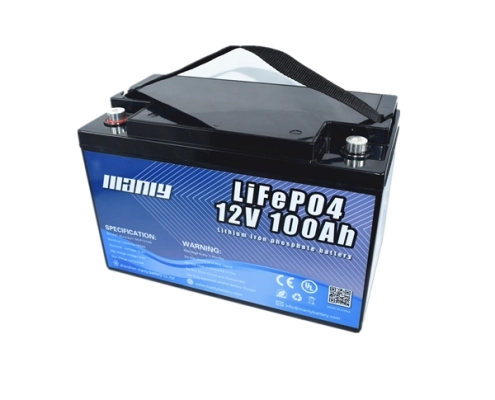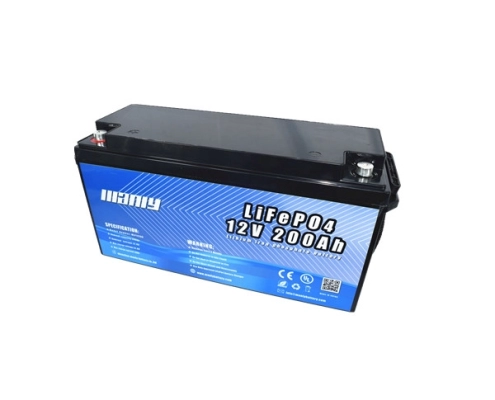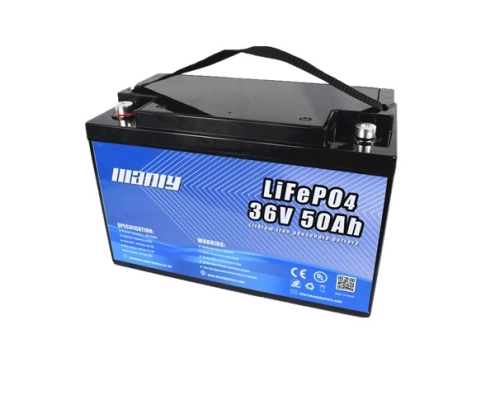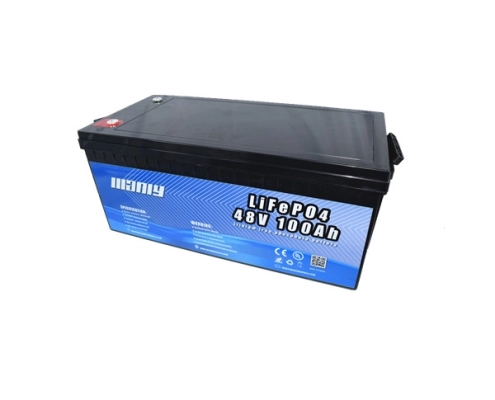Best Lithium Marine Battery: Guide to Selecting in 2023
Marine batteries power the various electrical components on boats and ships, making them an essential part of any seafaring vessel. Traditional lead-acid batteries have long been the standard, but lithium batteries are quickly becoming a popular alternative due to their extended lifespan, reduced weight, and enhanced performance. When selecting lithium marine batteries, owners must consider several key factors to ensure they choose the optimal model for their needs.
What Are Marine Batteries?
First, it helps to understand what specifically makes a battery “marine-grade.” Marine batteries are designed to withstand the rigors of the marine environment, including vibration, shock, and temperature extremes. They feature thick external casings and sturdy internal plates that can handle frequent and prolonged charging from the vessel’s alternator or generator. Marine batteries also utilize absorbent glass mat (AGM) technology that suspends the battery acid in fibers for spill resistance.
The lithium iron phosphate used in modern lithium batteries offers considerable advantages over traditional lead-acid types. First and foremost is the impressive lifespan – lithium batteries last over four times longer. Whereas lead-acid may need replacement yearly, lithium variants can operate for up to 10 years.
Lithium batteries also charge faster, store well over longer periods, and discharge energy more efficiently. And since they’re much lighter weight, they place less strain on vessels. For cruisers or liveaboards, lithium batteries take up less onboard space as fewer total units are required.

Selecting the Right Lithium Marine Battery
When choosing lithium batteries for your boat, yacht, or other seafaring vessel, selecting the optimal model requires careful consideration of several key factors. Taking the time to evaluate your needs and compare battery specs will ensure your investment provides reliable power for years of smooth sailing.
Assess Your Energy Requirements
The first step is determining the total energy profile based on the electronics and accessories you need to operate. Make a list of all electric devices and their typical runtime per day, such as lights, navigation systems, pumps, entertainments systems, kitchen appliances, and more. Calculate the total average amp hours required across these usages.
Also consider potential future energy needs by factoring in a 20-30% buffer as more gear inevitably gets added over the lifetime of a marine vessel. This prevents having to upgrade your battery bank prematurely.
Compare Battery Capacities
Next, cross-reference your energy requirements against lithium battery capacities to identify models that can comfortably meet your demand. Marine lithium batteries are sold by total amp hours, which determines runtime. Options range from compact 100 AH models for smaller vessels to expansive 3,000+ AH behemoths capable of off-grid living.
When comparing capacities, don’t assume bigger is always better. Oversized batteries cost more upfront and occupy precious onboard real estate. Also, repeatedly discharging an oversized battery below 50% shortens its lifespan. Right sizing your bank enhances efficiency and value.
Evaluate Operating Temperatures
Ensure the marine lithium batteries under consideration can perform across the ambient temperatures your vessel will routinely encounter. Some lithium formulations handle freezing and sub-zero conditions better than others, while some thrive in hotter climes instead.
Verifying temperature tolerances prevents power issues or even damage when operating in more extreme environs. Battery specs should indicate minimum/maximum safe operating and storage temperatures. Optimal is around 32° F to 95° F.
Assess Safety Certifications
Reputable marine lithium battery manufacturers design their products to meet key industry safety benchmarks. Look for UL, CE, FCC, UN38.3, and other certifications to ensure rigorous development testing and quality production standards.
Robust casings and marine-grade components also increase resilience across harsh marine environments. Many batteries also integrate internal circuit protection against overcharging, short circuits, reverse polarity, and more.
Compare Battery Management Systems
Advanced battery management systems take much of the guesswork out of monitoring and maintaining your battery bank for optimal performance and lifespan. The BMS regulates charging to prevent overloads while preventing under voltages during discharging.
Look for smart BMS features like cell balancing to calibrate energy distribution across individual cells and battery banks. Temperature sensors also allow the BMS to adjust charging parameters based on conditions. And sophisticated systems provide a wealth of usage metrics and diagnostics via digital interfaces.
Factor in Weight and Size
Being mindful of battery weight assists proper positioning and installation, while compact sizing facilitates flexibility in placement. The average 100 AH lithium marine battery spans about 13” x 7” x 9” and weighs 30 pounds. Generally, lithium batteries weigh 60-70% less than comparably rated AGM or flooded lead-acid models.
Larger capacities require more cells and grow bigger in size and heft accordingly. But even high-capacity lithium occupies far less space than lead-acid equivalents, freeing up room for other gear. Still, ensure your intended mounting locations can structurally support battery banks, especially in rougher waters.
Compare Price Per Usable Capacity
While upfront lithium battery pricing hovers 2-3X over lead-acid, their long 4,000+ cycle life compared to just 400-800 cycles for lead-acid makes them far more cost-effective long term. When weighing expenses, avoid fixating solely on the sticker price. Instead, calculate price against total usable capacity over the operating lifespan.
By that measure, lithium batteries deliver exponentially better value, with some estimates placing usable capacity costs at nearly 1/8th that of competing lead-acid batteries. The higher initial investment pays substantial dividends over years of service.
The Best Lithium Marine Batteries
When upgrading to lithium batteries for marine use, several top models from leading manufacturers like MANLY provide reliable power suitable for boats and other seafaring vessels. Below offers a more in-depth comparison of specifications, pros, cons, features, and performance factors across five high-quality lithium marine batteries.
1. MANLY 12V 100Ah Lithium Marine Battery
This 100-amp hour 12V model from MANLY works well for small to midsize vessel applications like bass boats, pontoons, aluminum fishing boats, and more. The rugged 30+ pound battery integrates a smart BMS system for balanced performance and activating safety cutoffs if voltage or temperatures exit safe operational ranges.
Constructed using commercial-grade lithium iron phosphate cells, it can handle up to 5,000 complete discharge cycles while retaining at least 80% capacity. Recharging from total depletion spans 1-2 hours at recommended adapter amperages. Integrated carrying handles assist portability for custom mounting.
Pros:
- Cost-effective option for lighter duty usage
- BMS enhances safety and extends lifespan
- Starts engines up to 40HP in 32 second average
- UL 2271 and UN38.3 certified
Cons:
- Lower capacity than larger variants
- Requires parallel banks for higher energy needs
- Lacks advanced smartphone monitoring apps
2. MANLY 12V 200Ah Lithium Marine Battery
Doubling maximum capacity to 200-amp hours, this upgraded 12V MANLY model can readily power larger vessels with greater accessory loads or runtime demands. The lithium iron phosphate cells hold their charge at a consistent 13V and are encased in a durable, anti-corrosive aluminum alloy housing rated IP67 for water and dust protection.
Its fortified casing and materials support over 3000 5G vibration cycles and 1000 1M drop tests. Quick-connect F1 terminals enable simplified installation while an integrated BMS protects against common damage hazards.
Pros:
- Twice the capacity of the 100Ah version
- Integrated metal handles for secure transport
- Hardened casing resists elements
- Low 2% self-discharge when stored
Cons:
- Bulkier and heavier than 100Ah option
- Higher cost than entry-level sibling
- Requires extra vigilance to lifting safety
3. MANLY 24V 100Ah Lithium Marine Battery
This 100Ah battery steps voltage up to 24V, allowing the use of two 12V banks wired in series for simplified installations. The included mount hold-down tray tailors to positioning flexibility while the sealed lithium iron phosphate cells handle temperature fluctuations of -4° to 140° Fahrenheit without issue.
The casing is fully immersible, with an IP68 rating. Low internal resistance and high conductivity brass terminals ensure efficient performance across the 3000+ rated cycles before 80% capacity factors. It recharges from dead to full in 1-3 hours depending on charging sources.
Pros:
- 24V systems often preferred for larger vessels
- Rugged casing resists corrosion
- 5-year comprehensive warranty
Cons:
- Requires proper 24V charging sources
- High voltage poses greater safety risk if mishandled
4. MANLY 36V 50Ah Lithium Marine Battery
Providing a midpoint between 12V and 48V systems, this 36V MANLY option utilizes premium lithium nickel manganese cobalt oxide cells to supply plenty of power at a reduced weight and size factor. At under 20 pounds, the compact casing with integrated carry handles lends itself well to flexible mounting placements where space comes at a premium. This battery can be connected in series or parallel to achieve specifications such as 36V 100Ah, 200Ah, and so on.
Short circuit, overload, over temperature, and under voltage discharge safeguards are all managed automatically via the integrated battery protection system. Low heat generation and emissions also enhance safety.
Pros:
Space and weight saving design
- Handles simplified series wiring
- Vibration and shock-resistant
Cons:
- Lower capacity than higher voltage models
- Requires proper 36V charger compatibility
5. MANLY 48V 100Ah Lithium Marine Battery
Topping performance benchmarks is MANLY’s 48V 100Ah model, sourced from four 12V banks wired in series for formidable capacity and enhanced cycle counts per charge. The high-density lithium iron phosphate cells are outfitted with double-sided plates to bolster conductivity and lifespan compared to single-sided variants, with up to 8000 cycles projected at 70%+ capacity retention.
It recharges in just 1-2 hours from empty to full depending on the charging amperage. An integrated BMS monitors cell health metrics like voltage and heat while helping balance loads.
Pros:
- Highest energy density and total capacity
- 75% lighter than comparable lead-acid
- Fast recharge times even under heavy loads
Cons:
- One of the more premium priced options
- Higher voltage mandates safety diligence
With comparable resilience across MANLY’s marine lineup, the ideal lithium battery selection comes down to the voltage, capacity, dimensions, and certifications required to reliably satisfy total electrical loads aboard your chosen vessel. Their robust batteries deliver ample clean energy across voltage requirements.
Types of Marine Batteries
Selecting the optimal marine battery chemistry involves balancing performance factors against budget realities. The three main types each serve distinct applications and use cases:
Flooded Lead-Acid Batteries
The most affordable and thus most common, flooded lead-acid batteries utilize lead plates submerged in a liquid sulfuric acid electrolyte solution. They are well-suited as starter batteries for igniting internal combustion engines up to about 200 horsepower, such as smaller outboard motors or generators.
However, their enclosure style leaves them susceptible to leaks, fumes, corrosion, vibration damage and spill hazards. Routine maintenance is required to check fluid levels and add distilled water as needed to the cells. Refilling helps mix the electrolyte to counteract sulfation buildup – the prime failure mode of lead-acid batteries over time.
With moderate starting power and limited deep cycling durability often less than 400-800 cycles, flooded batteries work best on smaller craft used in shorter intervals rather than large liveaboard vessels or those offshore frequently. Still, when regularly maintained, flooded lead-acid offers cost-efficient starting reliability.
AGM Lead-Acid Batteries
Absorbed Glass Mat or AGM lead-acid batteries seal electrolyte inside microfiber boron-silicate glass mats between the plates rather than liquid surrounding them directly. This suspension offers increased vibration resistance critical for boats along with greater position flexibility since there is less risk of leakages or gassing.
Their valve-regulated sealed design allows AGM batteries to recombine gases produced during charging back into water within the cell, eliminating venting losses. This means never having to refill fluids over their lifecycle.
AGM batteries recharge slightly faster than flooded equivalents and tolerate a wider temperature range. And their construction allows for complete safe discharge versus the 50% limit that should be observed with flooded types to avoid plating damage.
With an estimated lifespan often double that of flooded batteries, AGM models better accommodate deep cycling essential for trolling motors, lighting, fish finders and other constant electronics. Though costing a few hundred dollars more upfront, their improved resilience pays off for vessels seeing more frequent and longer use per outing.
Lithium Batteries
Representing the biggest leap in marine battery technology are lithium variants utilizing lithium iron phosphate, lithium cobalt oxide or related cathode materials mated with graphite anodes. High energy density allows lithium batteries to store and deliver ample electricity despite lightweight and compact sizes.
Lithium chemistry shines in deep cycle applications with a whopping 4,000-6,000+ recharge cycles thanks to low internal resistance and efficient discharge rates. They house advanced battery management systems to automatically regulate voltages and charging to optimize longevity while protecting against common damage factors like short circuits, high heat, and voltage spikes.
Additionally, their minimal self-discharging means lithium batteries hold a charge exponentially longer during storage. And the fastest recharging rates up to 1-2 hours from total depletion offer less downtime between outings.
Of course, such formidable performance commands a steeper price, often 2-3X more than comparably sized AGM or flooded lead-acid models. However, factoring usable capacity over their extended lifespan against total cost reveals lithium delivers some of the lowest cost per cycle of any chemistry once amortized long-term.
Lithium vs. Lead-Acid Batteries
When determining the best battery chemistry for marine use, lithium and lead-acid variants have pronounced differences:
- Lifespan: Lithium batteries last over 4 times longer, reaching 4,000-6,000 cycles versus only 400-1,000 for lead-acid. Extended runtime reduces long-term costs.
- Weight: Lithium batteries are on average 60-75% lighter than comparable lead-acid models. This makes them easier to install in tight spaces and reduces carrying capacity demands.
- Discharge Ability: Lithium batteries can discharge around 80% of their total capacity and maintain longevity, while lead-acid should only discharge 50% to avoid damage. This provides more usable energy.
- Recharging: Modern lithium batteries can fully recharge in just 1-2 hours, while lead-acid often requires 12-15 hours to reach 100%. Quicker recharging then allows getting back underway faster.
- Initial Cost: Upfront purchase price of lithium remains higher than lead-acid, however their total cost of use over the lifespan is lower. Savvier boat owners focus less on sticker price and more on value.
How to Charge a Marine Battery
Charging your marine batteries properly is critical to maximizing their performance and lifespan. Here are some key charging tips:
- Use the Right Charger Invest in a compatible onboard or portable marine battery charger suited to your battery chemistry. This prevents damage from improper charging.
- Disconnect before Charging Disconnect batteries from all loads first to allow full amperage to reach the battery. Never charge a battery while it is powering electronics.
- Charge after Every Use Don’t allow deep cycle batteries to sit discharged for prolonged periods. Recharge to at least 80% after each trip to maintain health.
- Consider a Trickle Charger When storing boats for longer idle periods, connect to automatic trickle chargers to slowly keep voltages topped off. Just take care not to overcharge.
Following manufacturer charging guidelines for your specific marine batteries gives you the power you need on the water while taking care of your investment for more economic efficiency in the long run.
Marine Battery FAQs
How long do marine batteries last?
Marine battery lifespan varies considerably based on chemistry and application. Flooded lead-acid batteries tend to last between 2-4 years with regular maintenance. The more resilient absorbed glass mat AGM lead-acid chemistry extends this range to about 4-8 years in most vessels. Top-tier lithium iron phosphate batteries deliver 6-10 years even under frequent deep cycling demands.
Several factors affect overall longevity:
- Depth of Discharge: Limit discharges to 50% for lead-acid, or 80%+ for lithium. Deep cycling beyond thresholds shortens lifespan.
- Number of Cycles: Flooded batteries may reach just 400-800 cycles while AGM gets 600-1500 cycles and lithium soars to between 3000-5000 cycles.
- Operating Temperature: Store and use batteries in moderation climates between 60-80°F when possible, for longest durability.
- Maintenance: Regular inspections, cleaning corrosion, adding distilled water to flooded types, recharging fully, and protecting terminals enhances longevity.
Can I use a marine battery in my car?
It is technically possible but not ideal. Marine batteries, especially deep cycle ones, are engineered for slow steady discharging over hours, followed by deep and fast recharging after each use. They utilize thick lead plates that withstand prolonged discharges of up to 80% capacity. This differs from the thin starter plate design in car batteries used to cold crank engines with short powerful bursts then constantly recharge at highway speeds.
While a marine battery can physically fit most automotive trays and terminals, their charge acceptance tapers off around 85-90% capacity – they struggle reaching a full charge with meager automotive charging systems. Opt for an actual dual-purpose battery meeting criteria for both marine and automotive applications instead. (Learn more about Marine Battery vs Car Battery)
How to test a marine battery?
To evaluate charge level and health of marine batteries:
Flooded Lead-Acid – Use hydrometer to test liquid electrolyte, gauging specific gravity or density as indicator of available capacity.
AGM Lead-Acid / Lithium – Employ digital battery tester which measures open circuit voltage, the best representation of charge level. For 12V batteries: 12.6V+ = full charge, 12.4V = 75% charge, 12.2V = 50% charge, 12V and under = discharged.
For complete validation, conduct load testing with a multi-meter attached to major electronics while monitoring voltage drop over time. This simulates real-world discharge.
Check electrolyte levels in flooded batteries, inspect for corrosion or dirt on terminals, test for excessive resistance using a shunt. Compare Gegen readings over time. (Learn more about Marine Battery Test)
Are all marine batteries deep cycle?
No, while deep cycle batteries optimally power trolling motors, fish finders, navigation devices and other constant electronics, smaller craft often rely on starting batteries to ignite internal combustion engines. Starting batteries provide quick bursts of strong power yet lack in deep cycling longevity. Dual-purpose marine models balance starting capability with moderate deep cycle capacity. Larger vessels often use a combo, with dedicated starting and deep cycle banks working in tandem.
How many volts is a marine battery?
Common marine battery configurations include:
- 12V batteries – For small craft with minimal electronic loads. Often used as starter batteries.
- 24V battery banks– Achieved by wiring two 12V batteries in series, better supports moderate electronics.
- 36V banks – Popular in coastal waters and RVs using three 12V units.
- 48V banks – Created from four 12V batteries for largest yachts and sailboats with extensive amenities and alternator charging needs.
(Learn more about Marine Battery Voltage)
What size marine battery do I need?
To determine ideal marine battery capacity:
- Tally amp draws of all electric devices and components on board
- Multiply by average hours of use per outing
- Total the amp-hour demand
- Add 20% buffer as contingency
- Size your battery bank to match (in Ah) or slightly exceed calculated capacity
Also be mindful of physical size, mounting footprints, terminal configuration as well as matching voltage outlays when selecting marine batteries. Consider future energy needs too. Professional marine electricians can conduct detailed energy audits as well to identify total demands. (Learn more about Marine Battery Voltage)







